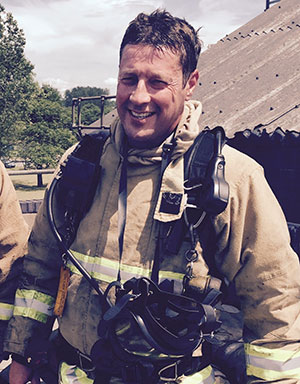Defending Fire Safety Cases.
The common misconception about criminal defence lawyers is that we spend our time trying to ‘get people off’. In fact, our job is to evaluate the evidence and then try to obtain the best possible result for our client, whilst ensuring that their legal rights are maintained and their right to a fair trial has been observed. In the majority of cases, the best result is usually obtained by advising the client to plead guilty. Guilty pleas may be entered to reduced charges or on a limited basis and will usually result in a discounted sentence.
Defending fire safety cases is difficult. As with all cases, prosecutors have to satisfy themselves that there is sufficient evidence upon which a defendant could be convicted before a prosecution is brought. In fire safety cases, this evidence is usually based upon breaches of the FSO that have been observed by one or more experienced fire officers, and which are usually evidenced by photographs and plans. Arguing that such breaches do not exist would usually be a lost cause.
Article 33 of the FSO provides for a defence of due diligence. However, the bar for due diligence is understandably set very high. Where there are clear breaches of the Order (and usually, there are a number of them), proving that a responsible person took all reasonable precautions and exercised all due diligence will usually be an uphill struggle. The difficulty is obvious, if the responsible person has been duly diligent, how have the breaches arisen? If there is a possible explanation, prosecutors will usually have considered whether the explanation is satisfactory before deciding whether or not to prosecute.
Before the breaches are considered, the first question for the defence lawyer is whether the appropriate person or legal entity has been prosecuted. The ‘it wasn’t me, Gov’ defence can be very effective, as proving that the prosecution have got the wrong responsible person, or ‘person with control’ under Article 5 will usually lead to the charges being dismissed. This will involve examination of the defendant’s role within the premises whether Articles 3 and 5 have been correctly applied by the prosecution.
In a number of cases, individuals as well as their companies have been charged. Defendants will usually wish to apportion the majority of blame onto a company, where possible, as a company can only be fined, whereas individuals can be sent to prison.
The alleged breaches do have to be examined in terms of the requirements of the Order. This may involve the obtaining of expert evidence. Arguing that an alleged breach was not a breach of the order would be very difficult without the assistance of an expert witness to provide an explanation of what the Order required in respect of the premises before the court.
The final limb of most offences (i.e. those which do not involve obstruction or breaches of a notice) under the Order is that relevant persons must have been placed at risk of death or serious injury.
In this regard, I would first want to satisfy myself that relevant persons have been evidenced within the premises. Where the defendant is an employer, relevant persons are usually clearly made out. However, when the relevant persons are tenants, they are often talked about without being evidenced.
I would then consider whether there was sufficient evidence that relevant persons had been placed at risk of death or serious injury as a result of the alleged breaches. Again, arguing that such a risk had not occurred may require supportive expert evidence.
I would not advise a client to enter a guilty plea to any offence unless all of these elements had had been sufficiently evidenced.
But in the majority of prosecutions, the cases have been properly prepared and the evidence is unarguable. In such cases, a damage limitation exercise is the most appropriate course of action. This involves making sure that any mitigating points that can be said on behalf of the defendant are made properly and forcefully to the sentencing tribunal. It would usually be necessary to obtain evidence on behalf of the defendant that the breaches of been rectified, that more effective policies and procedures have been adopted in respect of the premises and that the defendant is clearly remorseful about the offences.
The usual points about good character, credit for early guilty pleas and lessons learned all have to be made in an attempt to reduce any sentence.
So it is not all about getting them off. But one thing is for sure, prosecuting fire safety cases is a lot easier than defending them.


